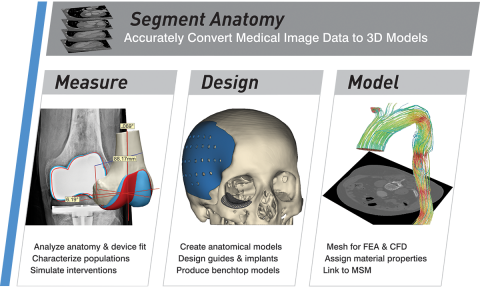Belgium-based Materialise announced new software that should enable medical professionals to make significantly greater use of 3D printing technologies.
Specifically they’ve launched the “Materialise Mimics Care Suite”. It’s a variation of their popular Mimics software that is used to prepare 3D information for printing. However, the new suite is specifically designed to address situations encountered at hospitals by professionals. Here’s how they describe the software:
The Materialise Mimics Care Suite is an open and flexible platform that includes planning and design software tools, 3D printed anatomical models and surgical guides, and patient-specific implants. … The Suite also introduces Materialise Mimics inPrint, a new software solution that enables surgeons to create accurate medical models for 3D printing in hospitals without the need of advanced clinical engineering support.
With the Materialise Mimics Care Suite, Materialise brings together medical software and services, both established and new, into a single, neutral platform that facilitates the further integration of 3D planning and printing into hospitals.
Why do I think this is a big deal? It’s because it breaks down a barrier often found in such environments: data.
There have long been machines in hospitals that capture 3D patient information, such as scanners. These machines have been designed to provide visual 3D representations for inspection by medical professionals in their diagnoses and surgical planning.
What’s been challenging, with the accessibility of 3D printing, is finding effective ways of using the 3D information collected for printing.
Yes, this has definitely been done before. We’ve all seen 3D prints of human babies before they’ve been born, but those have been obtained by the efforts of 3D technicians to port the data into a printable 3D model.
That skill is not always found in hospitals.
This is where the new Mimics Care Suite comes in: it connects to a wide range of medical devices to much more easily integrate the data into a 3D printing workflow. This should enable many more hospitals to get into 3D printing, and consequently drive up sales of printers, print services, print materials and software.
And an increased market size will attract more 3D ventures that create a kind of virtuous cycle of development.
That’s why this is important.
Via Materialise


